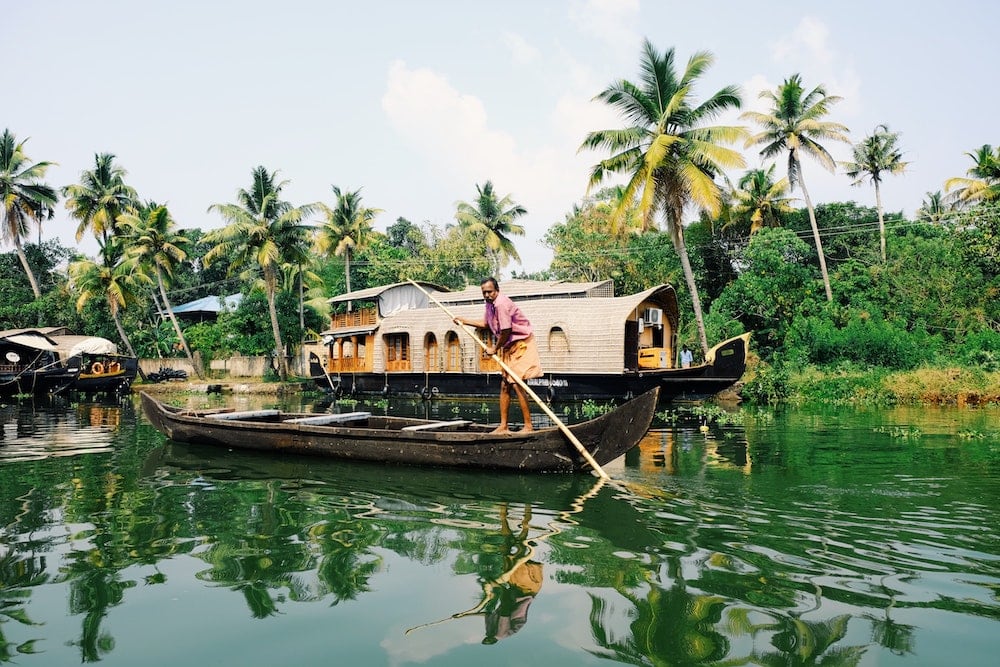What do guidebooks have to offer an eco-conscious traveler?
Before Tripadvisor, travel bloggers and Instagram-famous destinations… there were guidebooks. In the pre-Google era, they provided adventurous globetrotters with all the essential information necessary to navigate a new locale, city by city, neighbourhood by neighbourhood.
The quintessential Europe on $5 a Day by Arthur Frommer invented the guidebook as we know it today: a portable tome popular among backpackers, adventurers and anyone seeking an authentic, immersive experience in a new locale. Since its publication in the mid-20th century, guidebook publishers have expanded their offerings to specific audiences, including students, art lovers, oenophiles, climbers and cyclists, among others, who are seeking unique and exciting adventures.
“People want to make a real connection with a place, which is why cooking classes and walking tours are so popular.”

“It used to be that you went somewhere to see things, like the pyramids,” explains Paul Clammer, an author with Lonely Planet who has been writing travel guides for more than a decade. “But now there’s more of an interest in experiential travel. People want to make a real connection with a place, which is why cooking classes and walking tours are so popular.”
In recent years, another audience has grown too vast to be considered niche: the sustainable traveler. One would have to literally bury their head in the sand to miss the fact that climate change is the catastrophic issue of our present era, and travel is a significant contributor, accounting for 8% of global emissions. In light of this impact, conscientious globetrotters have made green travel a hot topic. A quick Google search yields countless articles detailing eco-friendly travel tips, from major media outlets that include the New York Times, the Washington Post, and CNN.
“..climate change is the catastrophic issue of our present era, and travel is a significant contributor, accounting for 8% of global emissions.”

Anyone looking for tips on reducing their travel footprint will find the same core tenets repeated across articles: choose a destination with a commitment to sustainability, stay in an eco-friendly hotel, respect the local environment, and don’t forget to bring your reusable water bottle! After perusing a few online sources, you might feel equipped with all the information you need to fulfill the Boy Scout’s directive to leave no trace, no matter where you go. If your packing includes a guidebook, will you find any unique insights inside?
Guidebooks in the green era
As they were originally marketed to budget travelers seeking affordable itineraries and under-the-radar experiences, guidebooks have historically offered low-impact suggestions. Suggestions like taking public transit, packing your own towel, and dining at food stalls instead of hotel restaurants were highlighted for their affordability but also reduced environmental impacts.
Fodor’s first released a guide to eco-friendly destinations around the world in 2008. But otherwise, major publishers are light on printed editions that address green travel; content on the subject tends to proliferate online, as with tailored resources like Green Traveler Guides e-books.
However, a few green tendrils have sprouted up across publishers all the same. Lonely Planet denotes sustainable travel choices with a leaf icon, for whom that may be a deciding factor between options, though details about what makes an entry “green” are scarce. Clammer says that the publisher trusts authors to use the leaf at their discretion. Most publishers could do more to on this front; for instance, ensuring each regional summary of hotel options includes at least one or two that are certified by an independent organization like Green Key.

Many guidebooks include a section summarizing environmental issues in vulnerable developing nations, like Thailand and Vietnam, but not European nations like Germany or Denmark. It may be a result of developed nations scoring high on the Environmental Performance Index, with nation-wide policies that mitigate tourist impact. While it’s helpful context for learning about a destination, a broad overview of major environmental concerns is unlikely to help travelers understand the impacts of their visit or make decisions about their itineraries on the ground.
While it’s helpful context for learning about a destination, a broad overview of major environmental concerns is unlikely to help travelers understand the impacts of their visit or make decisions about their itineraries on the ground.
A few guidebook series are inherently designed for low-impact travel. Moon’s City Walks books provide on-foot itineraries that offer travelers a slower, deeper introduction to urban destinations that focus on experiences and avoid the carbon impacts of tour vehicles. And Cicerone focuses on hiking and cycling adventures, including detailed information about local landscapes and wildlife for each destination, though their audience is fairly niche.

Going deeper on green travel
When it comes to sustainable travel tips, you’ll find them with ease and in abundance online. But travel guides offer something unique too— a perspective that gets at the heart of sustainability.
All social movements are eventually co-opted by marketing, and sustainable travel is no exception. “Greenwashing,” the process of appearing eco-friendlier through promises and packaging while making few substantial changes, actually originated in the travel industry: the term was inspired by hotels that encouraged travelers to reuse their towels, ostensibly to conserve water but actually to cut costs.
Since its coinage 30 years ago, greenwashing has grown in scope to encompass every variety of services and products, which can make it challenging to distinguish between truly sustainable options and good marketing. That’s where a guidebook, rather than an online review, can provide an unbiased, nuanced opinion. “[Guidebook authors] pay our own way; I get a fee and a daily expense budget, so I don’t take free stuff,” explains Clammer. “My job is to be neutral and present these options for the reader.” As a result of this journalistic independence, guidebook authors are less swayed by greenwashing in marketing or advertising, and their recommendations are arguably more trustworthy than online reviews.
That’s where a guidebook, rather than an online review, can provide an unbiased, nuanced opinion.
What’s more, guidebook authors have extensive experience in the places they write about; often they’ve been back multiple times to update the guidebook edition, building connections to local communities. This thorough investigation gives weight to their recommendations. “If you see a review on Tripadvisor saying, this is the best hotel with the best sunset view, that reviewer has probably only been to that one hotel,” Clammer explains. “But with a guidebook, the person writing it says this is the best place, they’ve been to a whole bunch of them.”

This level of insight gets at the heart of what it truly means to travel sustainably: with genuine respect and the goal of understanding and making a positive contribution to the places you visit. Guidebooks can help you understand how your travel decisions affect local communities, help you find independent businesses to support, and gain a wider perspective on your impact as a visitor. “People understand mass tourism can bring negative things,” says Clammer. “They want to understand [a place] and contribute, put money into the local economy.”
Don’t discount the value of a travel guide when considering the deeper meanings of sustainability, where the expertise of a single writer can provide you with a respectful, informed perspective.
Travelers who want to minimize their impact should draw from multiple sources. Start with researching your destination to see how viable it is to be green on the ground, and consider sustainable itineraries. Organizations that provide independent industry assessments can be helpful when making major decisions, like choosing a lower-emission airline. And online articles on greener travel can also be valuable for travel preparations, from assembling a zero-waste travel kit to using reef-friendly sunscreens.
But don’t discount the value of a travel guide when considering the deeper meanings of sustainability, where the expertise of a single writer can provide you with a respectful, informed perspective. To leave no trace, pack a reusable water bottle. But to leave a positive impact, build real connections wherever you go.





